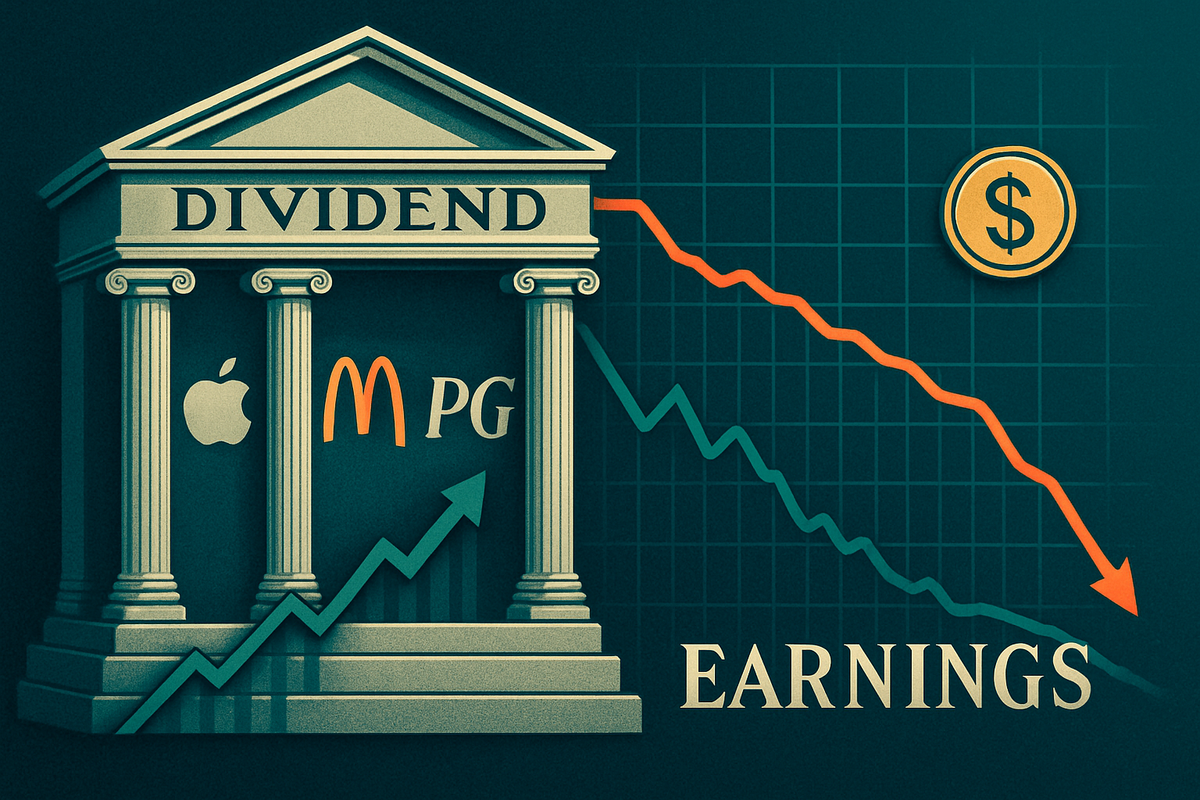
As the Q3 2025 earnings season hits full stride, a critical question looms for income-focused investors: are "dividend powerhouses" still a safe haven, and should they be considered before their upcoming earnings reports? With market volatility persisting and interest rate trajectories influencing investor sentiment, the allure of stable returns from companies with a long history of increasing dividends is particularly strong. Yet, the current economic climate demands careful scrutiny, as even the most robust dividend payers are not immune to market reactions following their financial disclosures.
The concept of "dividend powerhouses" centers on companies that not only consistently pay dividends but also demonstrate a reliable track record of increasing them over many years, often earning them titles like "Dividend Aristocrats" or "Dividend Kings." These firms are typically characterized by strong financial health, robust cash flows, and disciplined management, making them attractive for investors seeking both income and a degree of stability. However, the immediate period leading up to and following an earnings report can be a volatile time, even for these stalwarts. Investors will be closely watching for signs of sustained profitability, healthy payout ratios, and confident forward guidance to ensure the continued sustainability and growth of these cherished income streams.
Navigating the Q3 2025 Earnings Landscape for Dividend Giants
The Q3 2025 earnings season is a pivotal moment for several market leaders, including three prominent dividend powerhouses: Johnson & Johnson (NYSE: JNJ), Procter & Gamble (NYSE: PG), and Exxon Mobil (NYSE: XOM). These companies are set to report their latest financial results, with J&J kicking off as early as October 14, 2025, followed by P&G on October 24, 2025, and Exxon Mobil on October 31, 2025. These dates are crucial for assessing their operational health and financial outlook, especially given the current economic backdrop of moderated gains and heightened volatility.
The market's reaction to these reports will be heavily influenced by whether earnings meet, exceed, or fall short of analyst expectations, as well as the companies' outlooks for future performance. For dividend investors, the focus extends beyond mere profit figures to the underlying cash flow generation and the sustainability of their dividend policies. Any indication of weakening fundamentals that could jeopardize future payouts would be met with significant concern, despite their long histories of dividend growth.
These companies' strong dividend track records – J&J with 64 consecutive years of increases, P&G with 70, and Exxon Mobil with 43 – typically provide a buffer against short-term market fluctuations. However, an earnings miss or a cautious outlook could still trigger a temporary dip in stock price. Conversely, strong results and reaffirmations of dividend growth could reinforce investor confidence, solidifying their positions as anchors in income-oriented portfolios. The general sentiment among analysts for all three remains cautiously optimistic, with "Moderate Buy" ratings, indicating a belief in their continued stability and modest upside potential.
Spotlight on Key Dividend Powerhouses: JNJ, PG, and XOM
Johnson & Johnson (NYSE: JNJ)
A healthcare titan, Johnson & Johnson (NYSE: JNJ) is a cornerstone of many dividend portfolios. Its upcoming Q3 2025 earnings report, expected around October 14, 2025, will be closely scrutinized. J&J's impressive streak of 64 consecutive years of dividend increases, coupled with an attractive yield of approximately 2.73% and a healthy payout ratio of around 53-54%, speaks volumes about its financial resilience. Analysts maintain a "Moderate Buy" consensus, with price targets suggesting modest upside. Investors will be looking for continued strength across its pharmaceutical, medtech, and consumer health segments, particularly after its recent strategic adjustments, to ensure the ongoing health of its dividend.
Procter & Gamble (NYSE: PG)
Procter & Gamble (NYSE: PG), the consumer staples giant, is another dividend king with an astounding 70 consecutive years of dividend increases. P&G's Q1 2026 earnings (for its fiscal year ending June), anticipated on October 24, 2025, will offer insights into consumer spending trends and the company's ability to navigate inflationary pressures. With an approximate dividend yield of 2.82-2.83% and a payout ratio between 61% and 65%, P&G's dividend sustainability appears robust. Market sentiment is generally positive, with a "Moderate Buy" rating, reflecting confidence in its diversified portfolio of essential household brands and its pricing power.
Exxon Mobil (NYSE: XOM)
Despite the inherent volatility of the energy sector, Exxon Mobil (NYSE: XOM) has distinguished itself with 43 consecutive years of dividend increases. Its Q3 2025 earnings, scheduled for October 31, 2025, will be keenly watched for insights into global oil and gas demand, refining margins, and the impact of its strategic investments in lower-carbon solutions. Exxon Mobil offers a compelling yield of approximately 3.58-3.60% with a payout ratio of about 55-56%, signaling a sustainable dividend. While analysts generally rate XOM as a "Moderate Buy," the cyclical nature of its business means earnings reports can prompt significant stock movements, even for a dividend stalwart. Investors will be assessing the balance between commodity price fluctuations and the company's operational efficiencies.
Broader Market Implications and Historical Context
The performance of these dividend powerhouses and the market's reaction to their earnings reports carry wider significance, reflecting broader industry trends and influencing investor behavior across the market. In an environment where corporate management teams are increasingly prioritizing dividend growth amidst above-average equity valuations, the stability offered by these companies is particularly valued. The S&P 500 dividends per share are projected to continue growing in 2025, albeit at a moderated pace, underscoring a broader commitment to shareholder returns.
Ripple effects from these earnings can be substantial. Strong results from J&J, P&G, and XOM can boost confidence in their respective sectors—healthcare, consumer staples, and energy—potentially lifting competitors and partners. Conversely, any unexpected weakness could cast a shadow, prompting broader sector re-evaluations. Regulatory and policy implications, particularly around monetary policy and interest rates, also play a significant role. The Federal Reserve's anticipated rate cuts in late 2025 and into 2026 are expected to stimulate demand, but any unexpected inflation or trade policy shifts could introduce headwinds, impacting borrowing costs and corporate profitability.
Historically, dividend increases, especially when coupled with strong earnings, have led to positive abnormal returns, signaling robust financial health. Conversely, dividend cuts are met with severe negative market reactions. While dividend-growing companies have historically offered stability and outperformed in "down and flat markets," they have tended to underperform during sharp market recoveries, a trend that investors should bear in mind given the current market dynamics. The consistent dividend history of these powerhouses often provides psychological comfort, signaling long-term resilience and disciplined management, even if an individual earnings report presents minor challenges.
What Comes Next: Opportunities and Challenges Ahead
Looking beyond the immediate Q3 2025 earnings cycle, the short-term outlook for dividend powerhouses is shaped by a mix of positive corporate performance and lingering macroeconomic uncertainties. The momentum from strong Q3 earnings, particularly in sectors like technology and financials, could provide some near-term tailwinds. However, slowing consumption growth, a sluggish housing market, and the diminishing effects of past stimulus measures could act as headwinds. The Federal Reserve's gradual approach to interest rate cuts will keep bond yields competitive, forcing dividend stocks to offer compelling growth and stability to attract capital. Rate-sensitive sectors, traditionally favored by income investors, may continue to experience delayed benefits from rate cuts.
In the long term (1-5+ years), the landscape for dividend powerhouses is defined by expectations of continued below-trend economic growth, but with an anticipated broadening of earnings growth beyond mega-cap technology firms. This could lead to a rotation of investor capital into other sectors where dividends are more prevalent. There is an increasing demand for cash returns from investors, prompting more companies to initiate or increase their dividends. The sustainability of these dividends will be paramount, requiring companies to maintain strong fundamentals, healthy balance sheets, and robust free cash flow generation. The long-term trajectory of U.S. trade policies, particularly tariffs, could also influence global growth opportunities and the strength of the U.S. dollar, impacting companies with significant international exposure.
Opportunities may arise in undervalued quality dividend stocks, especially in defensive or value-oriented sectors. A focus on dividend growth rather than solely high yield is projected to offer more stable returns. Challenges include continued interest rate sensitivity for some sectors, persistent inflationary pressures, and overall market valuation concerns. Investors will need to adapt their strategies, prioritizing dividend growth over pure yield, scrutinizing dividend sustainability, embracing diversification, and seeking companies with strong competitive advantages.
Comprehensive Wrap-Up: Navigating for Lasting Impact
In summary, the Q3 2025 earnings season for dividend powerhouses like Johnson & Johnson (NYSE: JNJ), Procter & Gamble (NYSE: PG), and Exxon Mobil (NYSE: XOM) is a critical juncture. While their long histories of consistent dividend increases provide a strong foundation, investors must remain vigilant, assessing each earnings report for signs of fundamental strength or weakness that could impact future payouts. The market's reaction will not only shape the trajectory of these individual stocks but also offer insights into broader economic trends and investor confidence.
Moving forward, the market remains influenced by a complex interplay of corporate performance, monetary policy, and geopolitical factors. Investors should continue to watch for robust corporate fundamentals, paying close attention to free cash flow and payout ratios. Federal Reserve commentary on interest rates, inflation data, and developments in trade policy will also be crucial indicators. The potential for sector rotation, where earnings growth broadens beyond technology, could create new opportunities for traditionally dividend-rich sectors.
Ultimately, while the allure of stable income from dividend powerhouses remains strong, a nuanced approach is required. A focus on fundamentally sound companies with sustainable dividend growth, coupled with a vigilant eye on macroeconomic and geopolitical developments, will be paramount for generating reliable income and long-term wealth in this evolving market environment.
This content is intended for informational purposes only and is not financial advice





